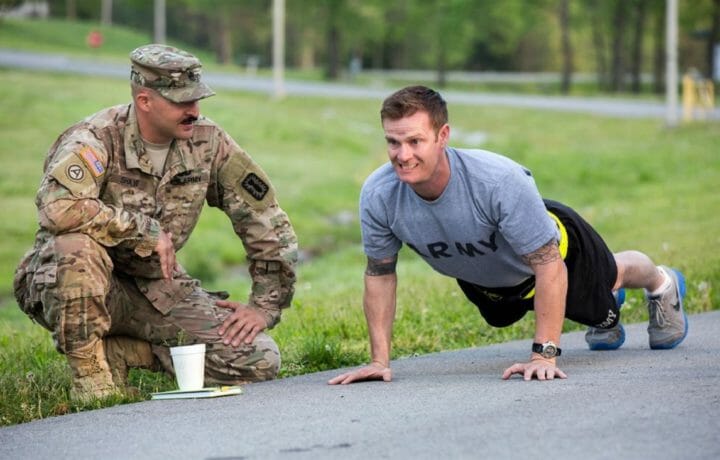On Friday, U.S. Army officials announced ‘major changes’ would be coming to the new Army Combat Fitness Test. Changes for Fiscal Year 2020 include official testing standards for all soldiers, tailored to military occupation specialty, as well as announcing all Initial Military Training officers and enlisted personnel will take the ACFT as a graduation requirement. The announcement also said the arm-extension pushup will replace the hand-release push up.
Maj. Gen. Lonnie Hibbard, commander of the U.S. Army Center for Initial Military Training, noted the plan places an “ACFT-trained soldier” at their first duty assignment, where they can promote readiness and socialize the test among fellow soldiers.
Every MOS in the Army will be color coded based on the physicality of their jobs. ACFT passing scores will be based on those categories, rather than age or gender.
To decide test scores, every MOS in the Army will be given a color code — either gold, gray, or black — to correlate with the frequency of the high physical demands within their respective careers. The three categories will then determine ACFT passing scores, regardless of age or gender. Black is the highest category, for soldiers in the most physically demanding jobs, gray is for those with “significant” physical requirements, and gold is for “moderate” demand jobs.
ACFT: A Work in Progress
In addition to ushering in the broader implementation of ACFT, Friday’s announcement included multiple changes to the standards around the multiple circuits of the test – some requirements dropped, and others increased, based on what the Army discovered over the past year of testing out the new ACFT. In Fiscal Year 2019, approximately 17,000 soldiers took the ACFT. That information was used to evaluate for changes to requirements.
issues with the acft
The Army may be going all-in with the ACFT, but it’s not without its critics. ClearanceJobs contributor David Brown wrote about the pending changes in 2018, and offered up a specific warning about what the test would mean for the Guard and Reserve just a few months ago. Here is what he had to say in 2018:
I have no doubt that when perfectly executed, this new test will accurately prepare one physically for combat situations. The 82nd Airborne will do a first-rate job with it. Their paratroopers may well come out of it in the best shape of their lives. I’m not worried about them. It’s the National Guard supply platoon in Duluth, Minnesota that I’m more concerned about. More than half of the U.S. Army is comprised of reserve and guard forces. I’m not convinced your average active duty company will be able to execute this properly, though at least they will be on a post with soldiers who can, and who can enforce standards. Once you get into the weeds, many guard and reserve units will have a hard time preparing soldiers and accurately maintaining standards.
Worse, they may begin maintaining standards that are second-rate, but “good enough.” It doesn’t take Jillian Michaels to spot a badly executed push-up or sit-up. But once you break out the kettle-bells, sled pulls, and lateral shuffles, you’re going to see some badly executed but “passing grade” tests. The lateral shuffles alone will lend themselves to the most diverse standards imaginable. It’s going to look like an interpretive dance competition at your local guard unit. This isn’t to pick on the guard; I don’t think this test is scalable to all of active duty, either.
When it comes to the push-ups, anyway, the Army seems to agree.
“We found it very difficult to grade the hand-lift (pushup) due to a myriad of factors, including shoulder mobility,” said Dr. Whitfield East, EdD, Research Physiologist for the U.S. Army Center for Initial Military Training. “Instead of lifting their hands, Soldiers hyperextended their lower backs and lifted their chests off the ground, and then never got back to the start position.”
And that’s why the test as implemented will use an arm-extension to replace the hand-release pushup.




